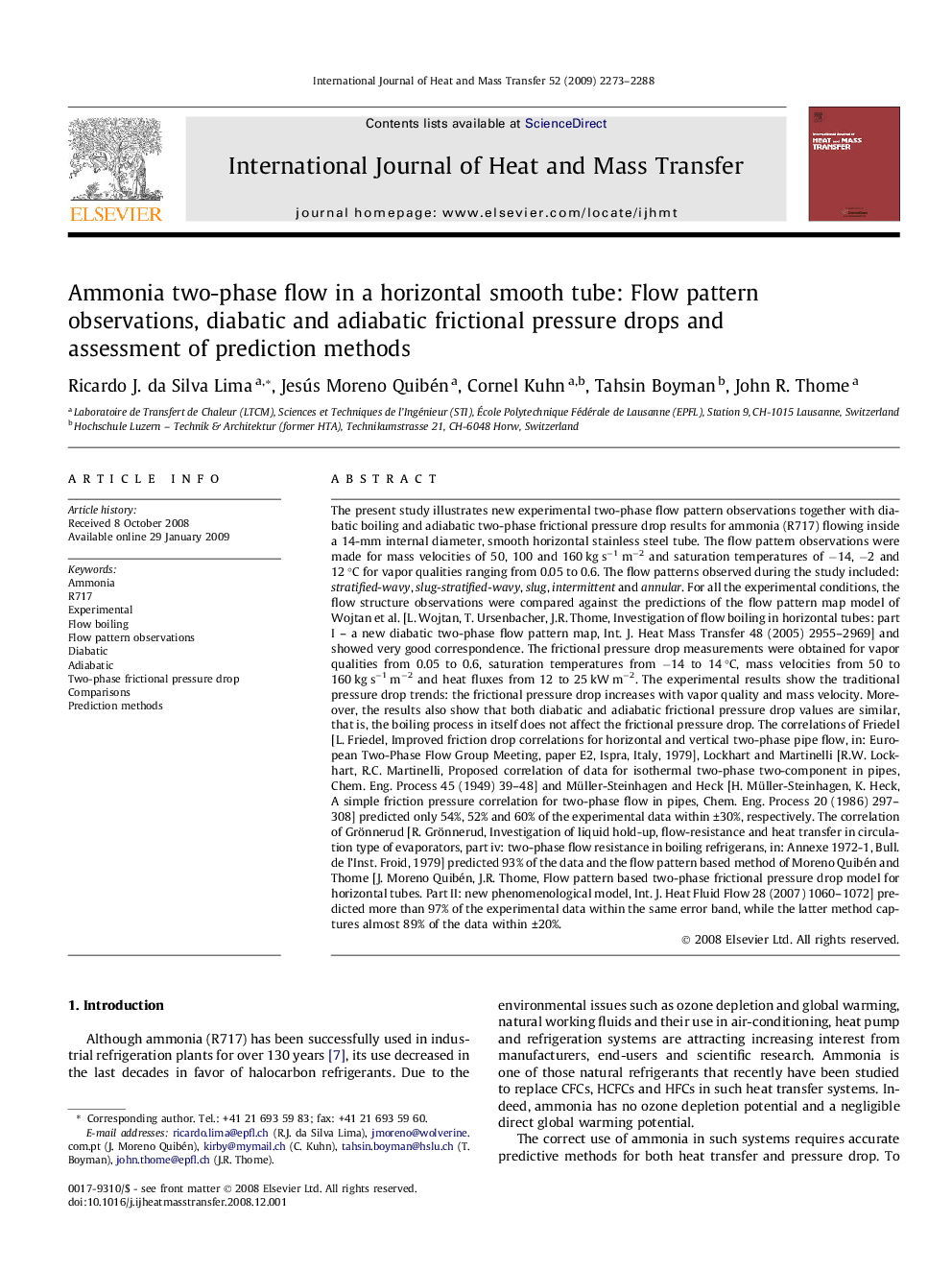| کد مقاله | کد نشریه | سال انتشار | مقاله انگلیسی | نسخه تمام متن |
|---|---|---|---|---|
| 660298 | 1458135 | 2009 | 16 صفحه PDF | دانلود رایگان |

The present study illustrates new experimental two-phase flow pattern observations together with diabatic boiling and adiabatic two-phase frictional pressure drop results for ammonia (R717) flowing inside a 14-mm internal diameter, smooth horizontal stainless steel tube. The flow pattern observations were made for mass velocities of 50, 100 and 160 kg s−1 m−2 and saturation temperatures of −14, −2 and 12 °C for vapor qualities ranging from 0.05 to 0.6. The flow patterns observed during the study included: stratified-wavy, slug-stratified-wavy, slug, intermittent and annular. For all the experimental conditions, the flow structure observations were compared against the predictions of the flow pattern map model of Wojtan et al. [L. Wojtan, T. Ursenbacher, J.R. Thome, Investigation of flow boiling in horizontal tubes: part I – a new diabatic two-phase flow pattern map, Int. J. Heat Mass Transfer 48 (2005) 2955–2969] and showed very good correspondence. The frictional pressure drop measurements were obtained for vapor qualities from 0.05 to 0.6, saturation temperatures from −14 to 14 °C, mass velocities from 50 to 160 kg s−1 m−2 and heat fluxes from 12 to 25 kW m−2. The experimental results show the traditional pressure drop trends: the frictional pressure drop increases with vapor quality and mass velocity. Moreover, the results also show that both diabatic and adiabatic frictional pressure drop values are similar, that is, the boiling process in itself does not affect the frictional pressure drop. The correlations of Friedel [L. Friedel, Improved friction drop correlations for horizontal and vertical two-phase pipe flow, in: European Two-Phase Flow Group Meeting, paper E2, Ispra, Italy, 1979], Lockhart and Martinelli [R.W. Lockhart, R.C. Martinelli, Proposed correlation of data for isothermal two-phase two-component in pipes, Chem. Eng. Process 45 (1949) 39–48] and Müller-Steinhagen and Heck [H. Müller-Steinhagen, K. Heck, A simple friction pressure correlation for two-phase flow in pipes, Chem. Eng. Process 20 (1986) 297–308] predicted only 54%, 52% and 60% of the experimental data within ±30%, respectively. The correlation of Grönnerud [R. Grönnerud, Investigation of liquid hold-up, flow-resistance and heat transfer in circulation type of evaporators, part iv: two-phase flow resistance in boiling refrigerans, in: Annexe 1972-1, Bull. de l’Inst. Froid, 1979] predicted 93% of the data and the flow pattern based method of Moreno Quibén and Thome [J. Moreno Quibén, J.R. Thome, Flow pattern based two-phase frictional pressure drop model for horizontal tubes. Part II: new phenomenological model, Int. J. Heat Fluid Flow 28 (2007) 1060–1072] predicted more than 97% of the experimental data within the same error band, while the latter method captures almost 89% of the data within ±20%.
Journal: International Journal of Heat and Mass Transfer - Volume 52, Issues 9–10, April 2009, Pages 2273–2288